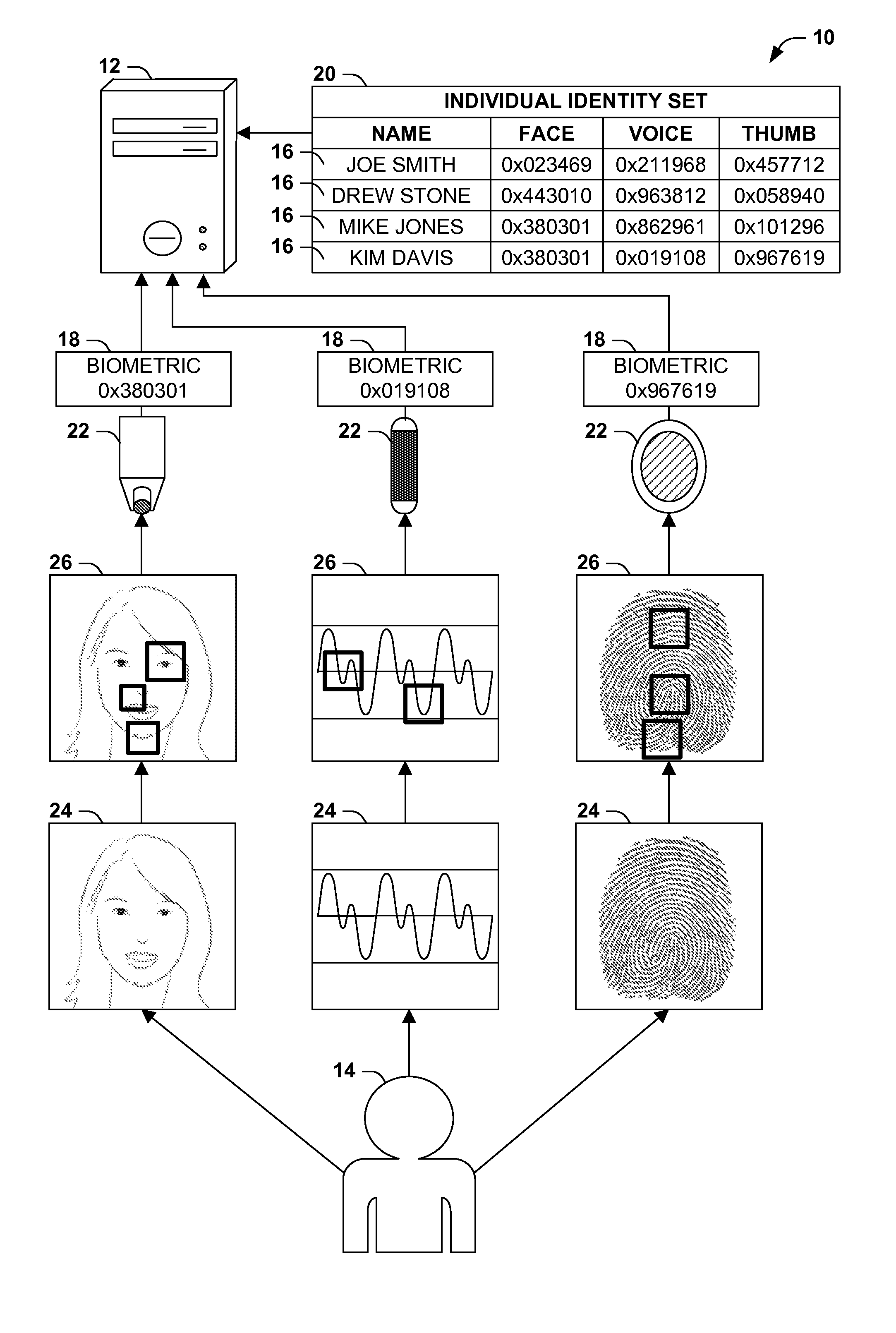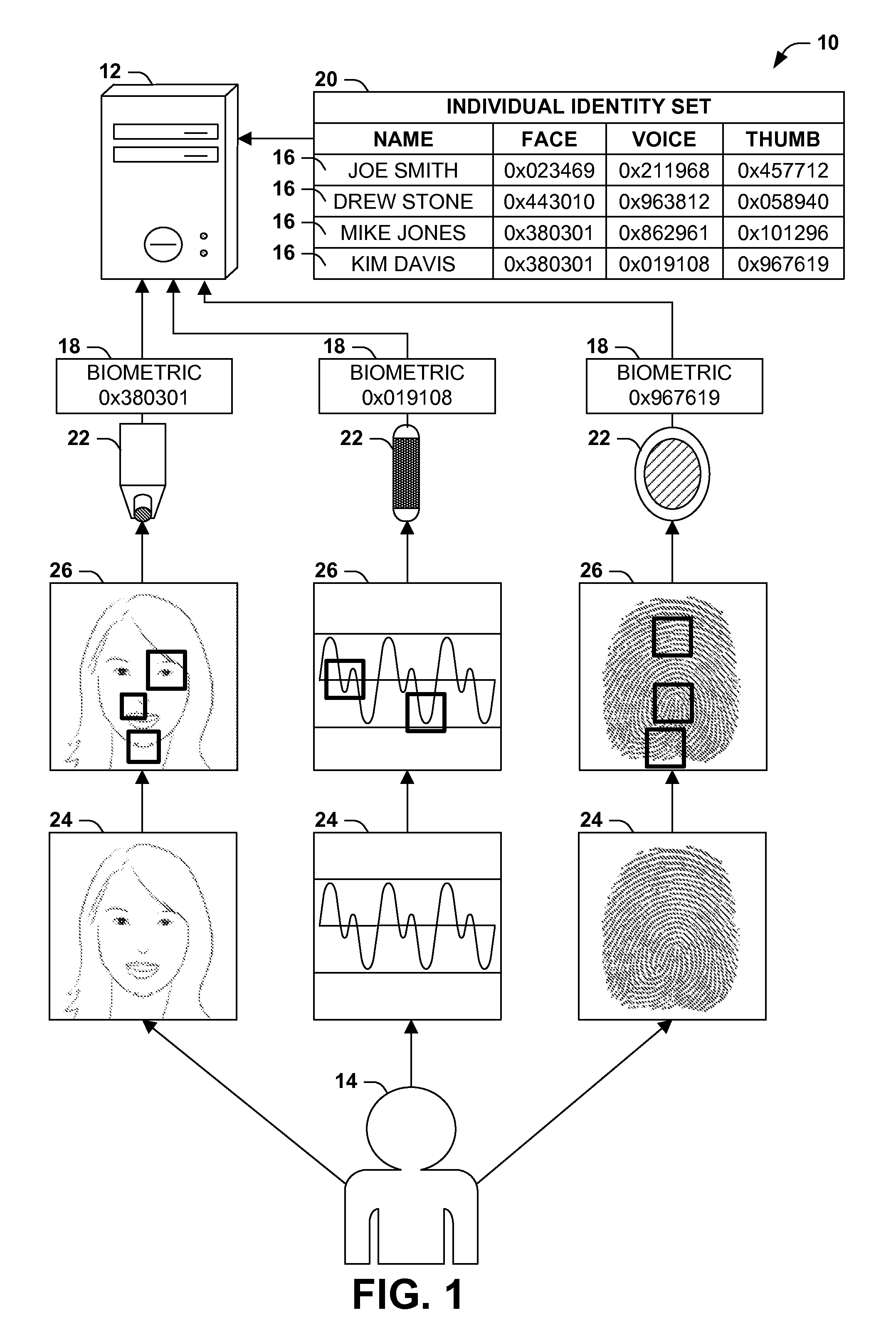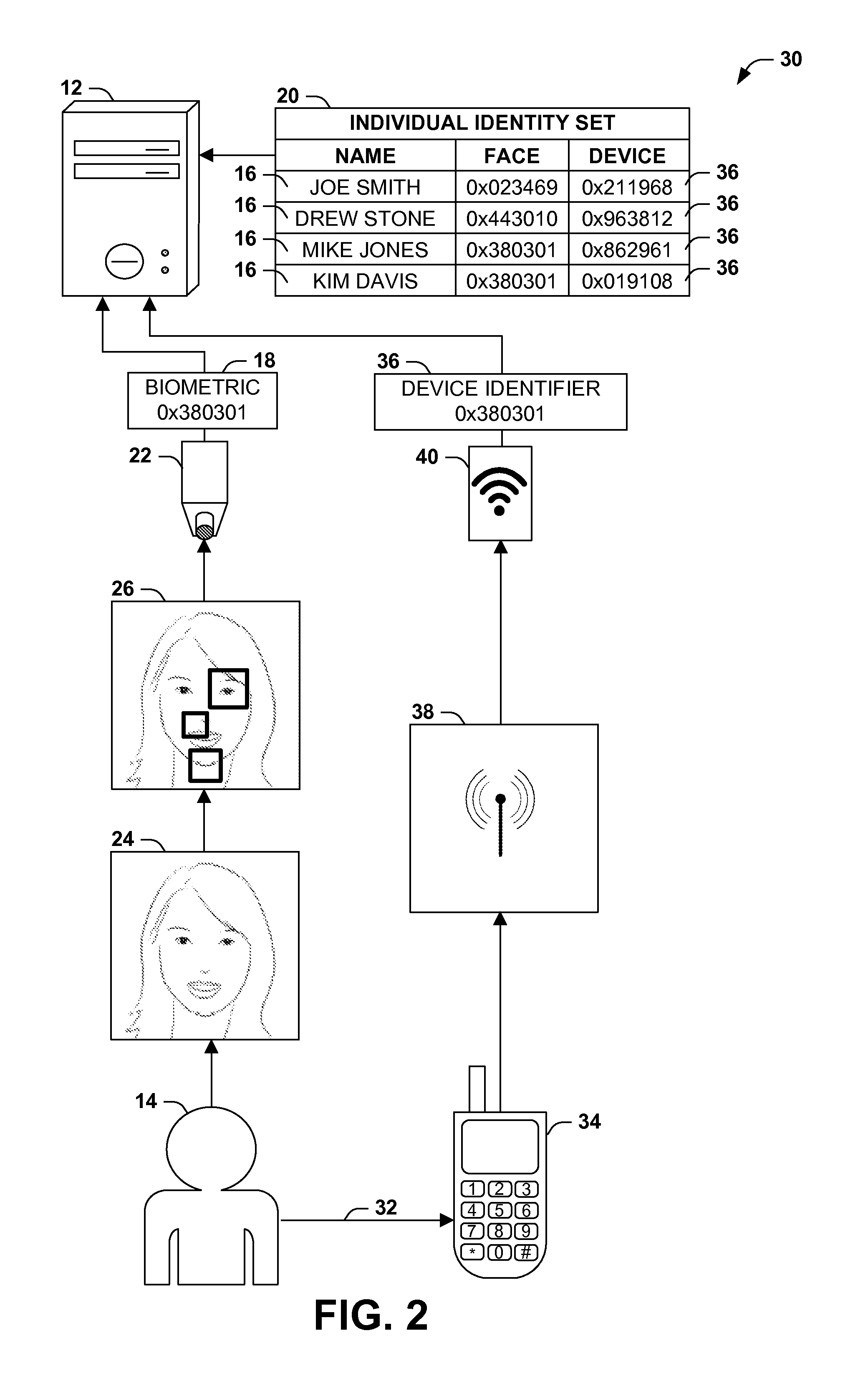Supplementing biometric identification with device identification
a biometric identification and device technology, applied in the computer field, can solve the problems of inability to implement on computing devices with limited resources, inability to identify individuals using biometrics, and inability to accurately identify individuals, etc., to achieve the effect of reducing the number of individual identities, improving efficiency and/or accuracy, and improving speed and accuracy
- Summary
- Abstract
- Description
- Claims
- Application Information
AI Technical Summary
Benefits of technology
Problems solved by technology
Method used
Image
Examples
first embodiment
[0026]FIG. 3 presents these techniques, illustrated as an exemplary method 50 of identifying individuals 14 using a computer 12 having a processor, a data store, a biometric detector 22, and a device detector 40. The exemplary method 50 may be implemented, e.g., as a set of software instructions stored in a memory component (e.g., a system memory circuit, a platter of a hard disk drive, a solid state storage device, or a magnetic or optical disc) of the computer 12, that, when executed by the processor of the computer 12, cause the processor to perform the techniques presented herein. The exemplary method 50 begins at 52 and involves executing 54 the instructions on the processor. More specifically, the instructions are configured to, for respective individuals 14, store 56 in the data store an individual identity 16 comprising at least one biometric 18 identifying the individual 14, and at least one device identifier 36 identifying at least one device 34 associated with the individ...
second embodiment
[0027]FIG. 4 presents these techniques, illustrated as an exemplary system 76 configured to identify individuals 14 using a computer 72 having a processor 74, a biometric detector 22, and a device detector 40. The exemplary system 76 may be implemented, e.g., as a software architecture, comprising a set of components, each comprising a set of software instructions stored in a memory component (e.g., a system memory circuit, a platter of a hard disk drive, a solid state storage device, or a magnetic or optical disc) of the computer 72, that, when executed (concurrently or consecutively) by the processor of the computer 72, cause the processor 74 to perform one or more tasks of the techniques presented herein. The exemplary system 76 includes a data store 78 that is configured to store individual identities 16 of respective individuals 14, where each individual identity 16 comprises at least one biometric 16 identifying the individual 14 (e.g., according to an identified physiological...
PUM
 Login to View More
Login to View More Abstract
Description
Claims
Application Information
 Login to View More
Login to View More - R&D
- Intellectual Property
- Life Sciences
- Materials
- Tech Scout
- Unparalleled Data Quality
- Higher Quality Content
- 60% Fewer Hallucinations
Browse by: Latest US Patents, China's latest patents, Technical Efficacy Thesaurus, Application Domain, Technology Topic, Popular Technical Reports.
© 2025 PatSnap. All rights reserved.Legal|Privacy policy|Modern Slavery Act Transparency Statement|Sitemap|About US| Contact US: help@patsnap.com



